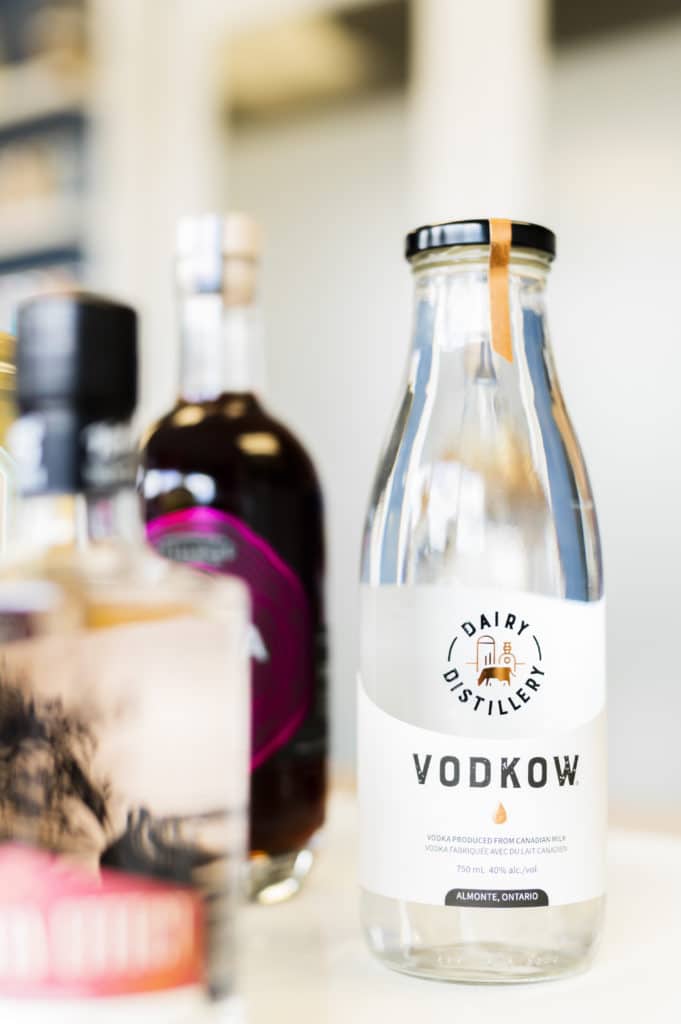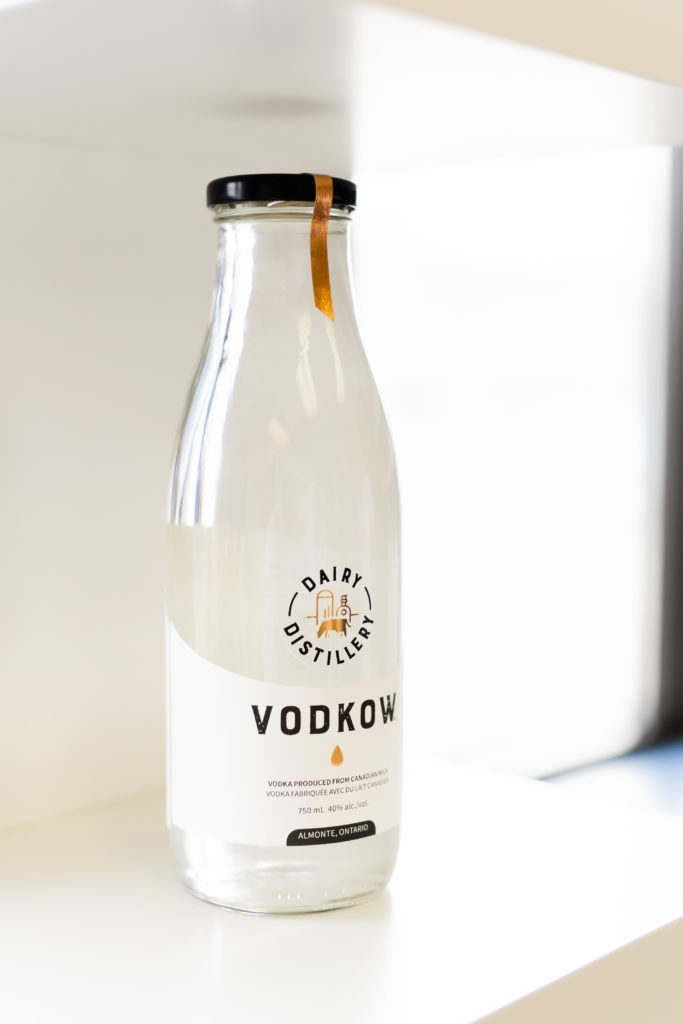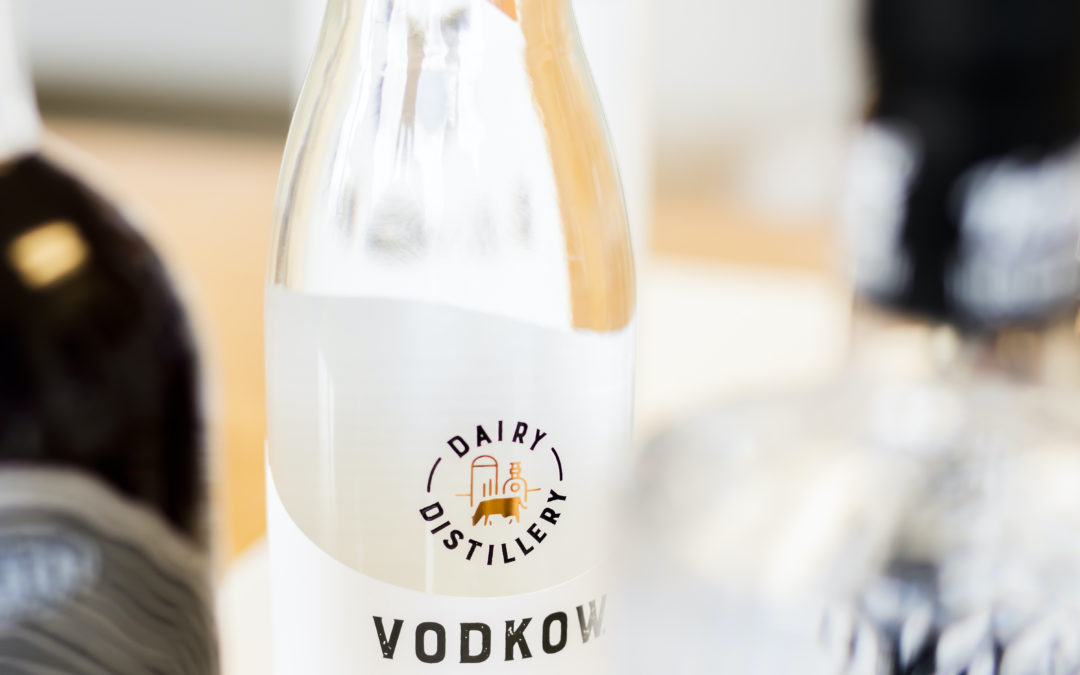Science and environmentalism meet artisanship
If you were to drive through the scenic mill town of Almonte on the Mississippi River near Ottawa, Ontario, you’d see all the usual markers of a pleasant and prosperous Canadian small town. There are three elementary schools, a farmer’s market, and a textile museum celebrating the town’s industrial past. Many of the 19th-century buildings are intact and the main street is lined with storefronts—retail spaces that are increasingly occupied by local artisans and makers.
It was all of this that attracted Dairy Distillery founders Omid McDonald and Neal McCarten to choose Almonte as the production hub for their very unique spirit: milk vodka.
“Almonte’s a destination now,” McDonald says. “We have a bunch of neat makers here and a really cute town so we built this building to be a showcase for it.” The contemporary micro-distillery draws in ample traffic, especially in the summers, but it’s what inside that’s the real attraction.
Like all other spirits, milk vodka is distilled from fermented sugar, only in this case the sugar is something called milk permeate—a by-product of the dairy industry that was previously wasted. “We knew that Genghis Khan and the Mongols drank milk beer,” explains McCarten, “and so we thought, ‘Well, there must be a way to turn this skim milk that’s getting thrown away into alcohol.’”
A graduate of the University of Ottawa, McDonald knew exactly where to go for help. Dr. Alexandre Poulain, a professor in the Department of Biology, assisted by biology student Jessica Gaudet, spent a year testing out different yeasts to see which would eat the permeate. Their hard work finally paid off and the team was able to begin fermenting.
The result? “It turned out to taste good! It’s far smoother than other vodkas and tastier to drink.” McDonald’s enthusiasm doesn’t end at his palate. “The really neat thing about this project is that, whereas traditional distillers are using stuff that humans can eat, we’re using essentially a waste stream that even pigs don’t like eating on its own. What’s really captured the imagination of people is that we’ve found a way of turning waste into wonderful.”
And just what would this milk-based vodka be called? Vodkow, of course.
Dairy Distillery has been open for only a year but already their signature product appears on the shelves of around 130 LCBOs. Currently available in Ontario, Alberta, and Nova Scotia, they’re expanding into British Columbia and Newfoundland with an eye to the United States market in 2020.

Diary Distillery, located in Almonte, ON launches Vodkow to the market.
Challenge
“Milk vodka” was a new product so there wasn’t a template or existing guideline to model after. Everything from the design to the bottle to the very definition of vodka was in question. (For the past 65 years, the federal government has held that a key component of vodka is its origin in potatoes or grain; after a little lobbying, Dairy was able to broaden the rule.)
From the beginning, the distillery was adamant about using an old school milk bottle and they were lucky enough to source one off the shelf. The cap was trickier—it took about six months to find one that worked. Next, the team needed to work out their labelling and, along with a Toronto-based designer, they agreed on a label, a medallion and a security seal.
With the cap and label sorted, the seal proved trickier. Originally, the Dairy team thought it would be screen printed but due to their relatively small batch sizes, this proved to be complicated. At around this time the team began to consult with Lorpon Labels.
Solution
More efficient process, superior quality and cost effectiveness
With Lorpon’s guidance, the Dairy team tried a different approach to their medallion, replacing the metallic ink—which was slightly translucent—with opaque gold foil.
The label itself got a makeover as well. Printed on bright white felt Aquashield paper designed to withstand moisture, the team ditched flexo printing, opting for a hybrid of digital and screen printing, as well as hot foil stamping. The result was stunning. “It’s a much more professional looking product,” McCarten says and McDonald agrees: “A huge, huge leap forward for us.”
With the packaging in top form, Lorpon looked to streamlining Dairy’s internal process. The team had been applying their logo stickers by hand—a costly and time-consuming task. As the Eastern Canadian distributor for Great Engineering label applicators from Australia, Lorpon had a solution for Dairy Distillery—the BenchMax label applicator with an optical orientation sensor. This would allow them to automate the job without losing precision positioning of their labels. “Lorpon hooked us up with hardware as well, which was a huge advantage for us,” McDonald recalls. “When you’re starting a business, finding these tools is so critical.” Lorpon even produced an instructional video on how to use the machine. “The BenchMax label applicator saves us a lot of time and effort and a lot of waste in the product as well. It’s a huge advantage for us.”

Lorpon was able to guide the team towards the perfect packaging while also improving their internal processes—and protecting their bottom line.
Result
Bringing a wealth of knowledge to the table saves time and money and facilitates innovation
By taking a long view of Dairy’s labelling project, Lorpon was able to guide the team towards the perfect packaging while also improving their internal processes—and protecting their bottom line. McCarten sums it up: “The cost of working with Lorpon ended up being significantly less than the other printer that we were using, and the quality is far superior.”
“What I really appreciate is the whole sign off process is really on point,” McDonald adds. “When Lorpon gave us dates, they always met them… We’re not always ahead of time enough and knowing that we can depend on Lorpon, it’s huge for us.”
